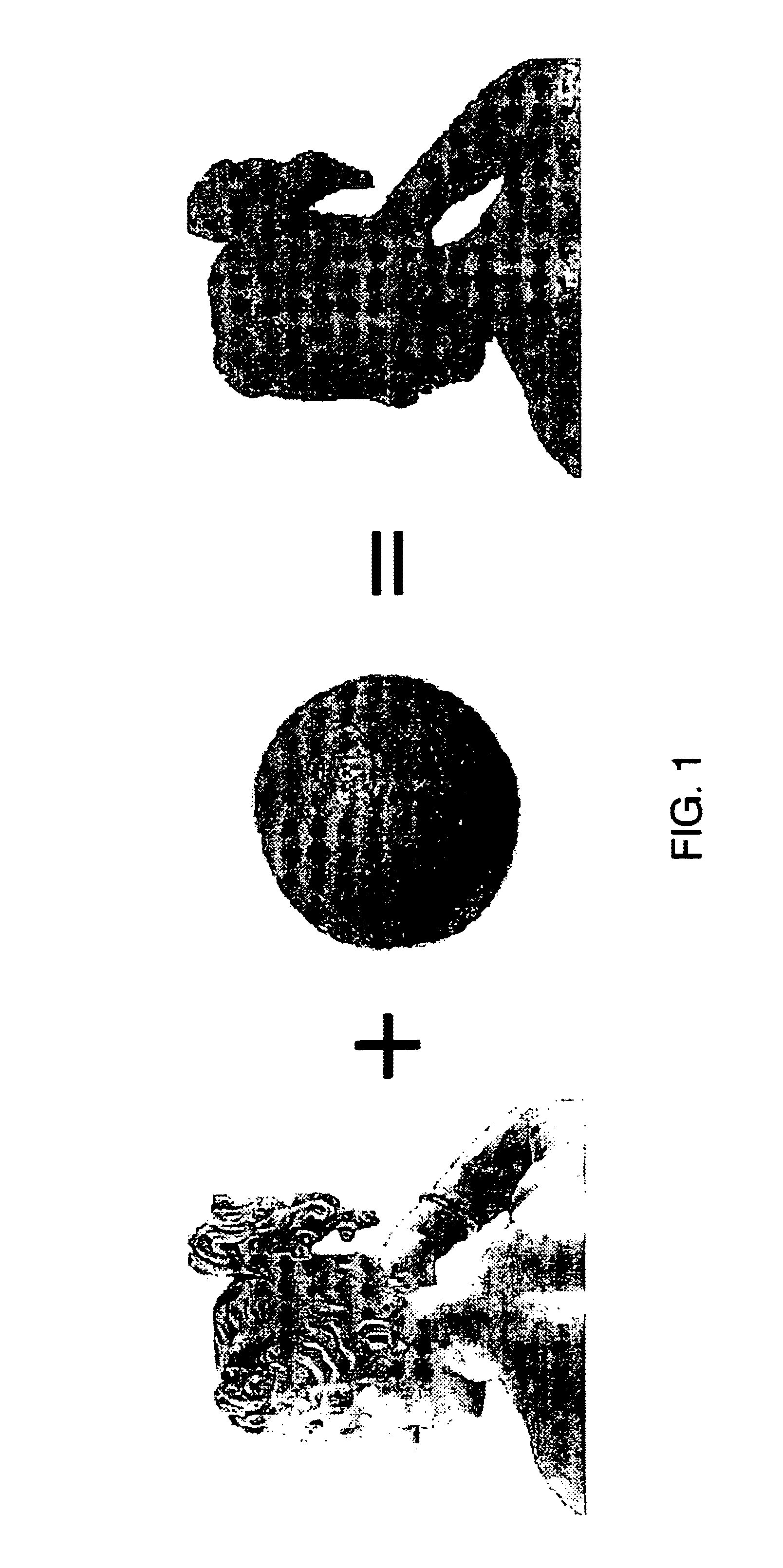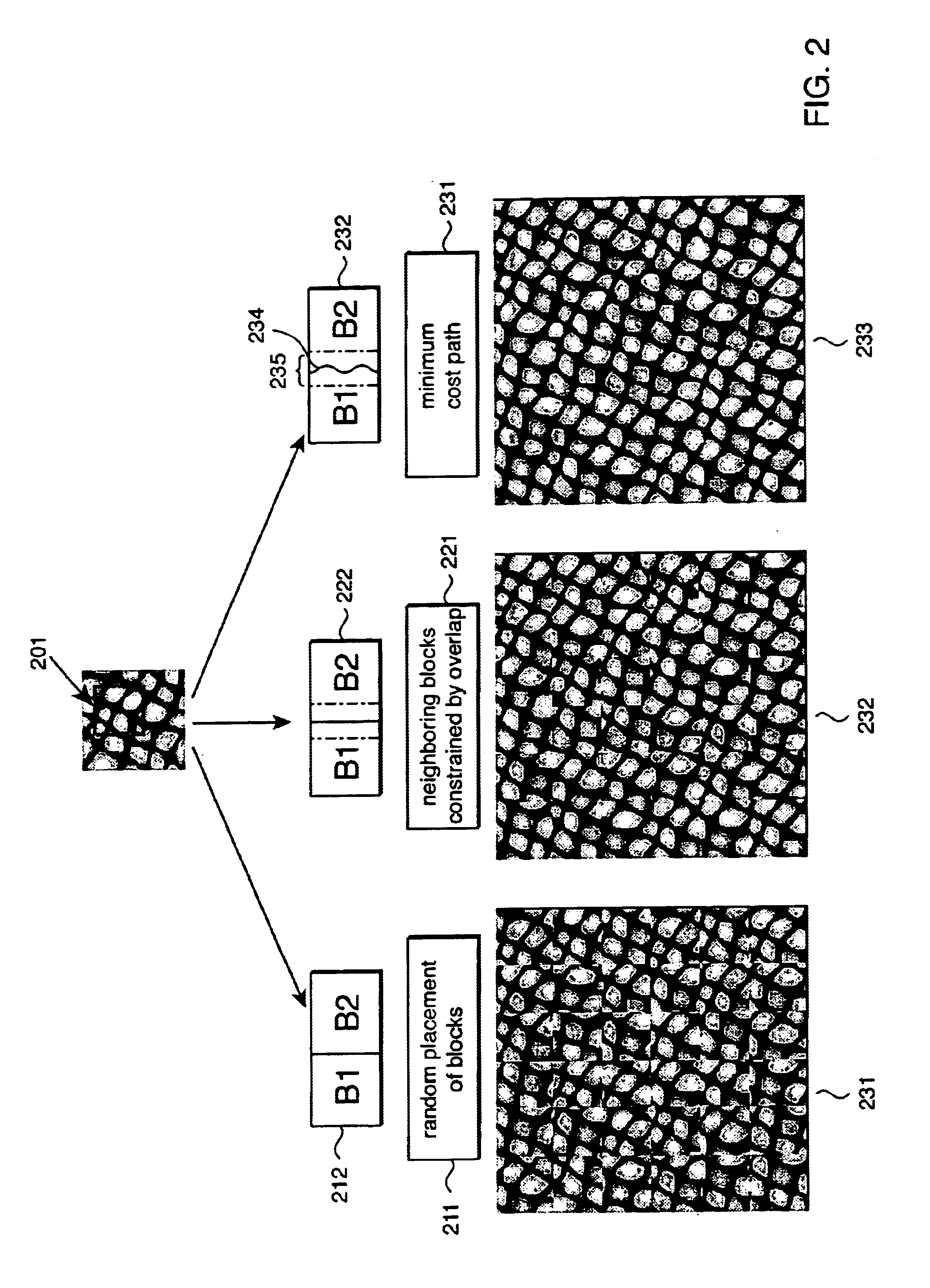Texture synthesis and transfer for pixel images
a technology of pixel images and texture, applied in the field of computer graphics, can solve the problems of large storage, inability to capture important relationships across scales and orientations, and inability to achieve highly structured textures
- Summary
- Abstract
- Description
- Claims
- Application Information
AI Technical Summary
Benefits of technology
Problems solved by technology
Method used
Image
Examples
Embodiment Construction
[0021]With our invention, we provide a patch-based texture synthesis and transfer method.
[0022]The idea of our invention is developed as shown in FIG. 2. Our unit of synthesis is Bi 201, a square block, of user-specified size, selected from a set SB of all such blocks in an input texture image 202. To generate a new synthetic texture image, as a first step, we simply tile the synthetic texture image 231 with blocks taken randomly 211 from the set SB, to what ever size desired. In this simple case, the blocks (B1-B2) 212 abut each other. The larger synthetic texture image already looks somewhat reasonable, and for some textures will perform no worse than many previous much more complicated methods. However, the result is not completely satisfactory. For most structured textures, no amount of smoothing can completely hide the fact that the texture at the edges of the randomly selected blocks does not match.
[0023]As a refinement, we overlap 221 the selected blocks (B1-...
PUM
 Login to View More
Login to View More Abstract
Description
Claims
Application Information
 Login to View More
Login to View More - R&D
- Intellectual Property
- Life Sciences
- Materials
- Tech Scout
- Unparalleled Data Quality
- Higher Quality Content
- 60% Fewer Hallucinations
Browse by: Latest US Patents, China's latest patents, Technical Efficacy Thesaurus, Application Domain, Technology Topic, Popular Technical Reports.
© 2025 PatSnap. All rights reserved.Legal|Privacy policy|Modern Slavery Act Transparency Statement|Sitemap|About US| Contact US: help@patsnap.com



